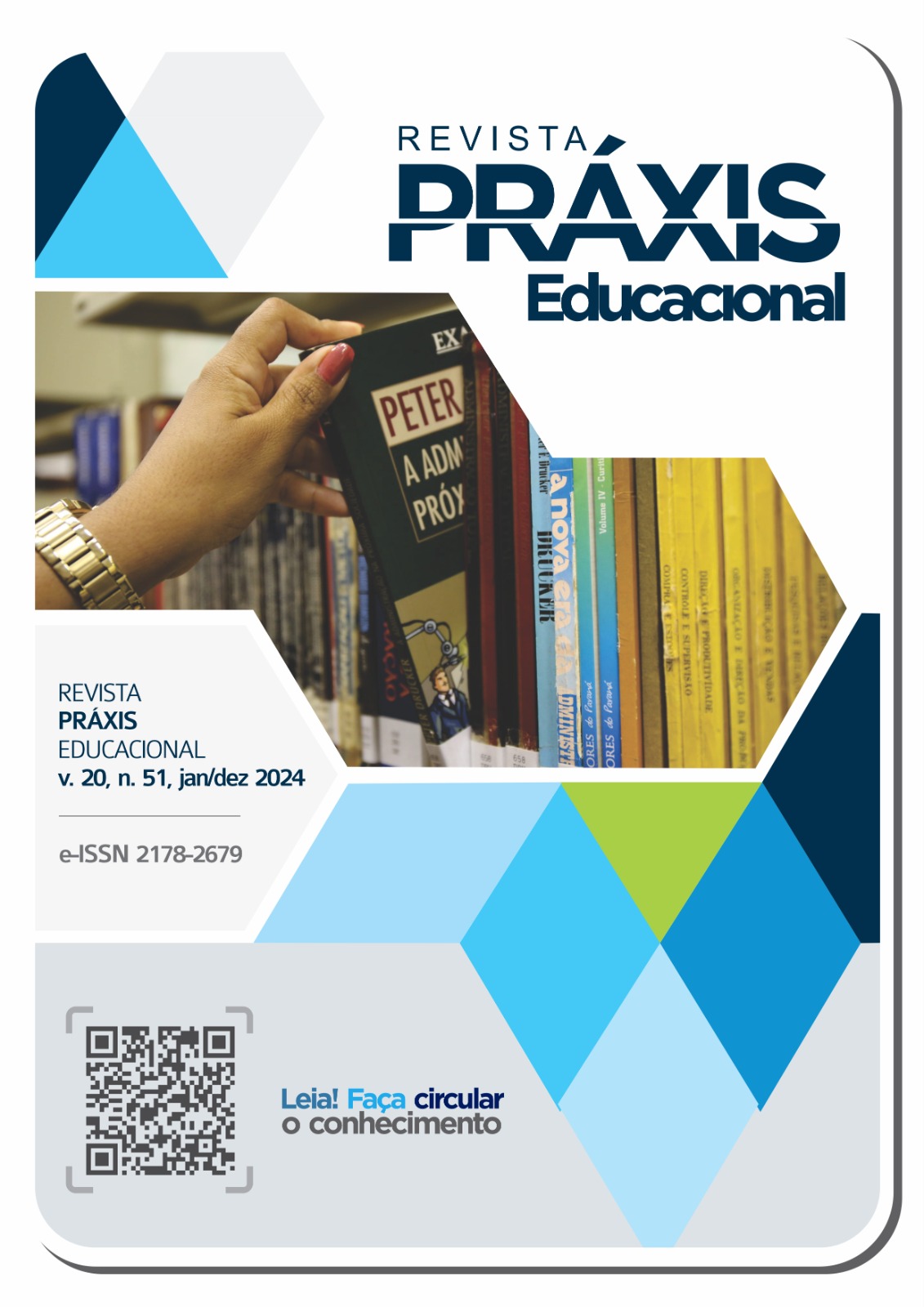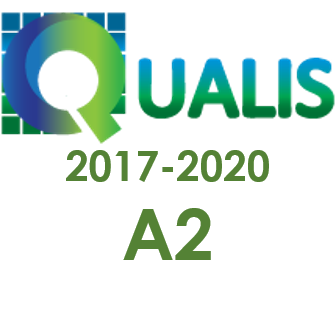The construction of writing in brazilian portuguese from a constructivist psychogenetic perspective
DOI:
https://doi.org/10.22481/praxisedu.v20i51.14871Keywords:
initial literacy, psychogenesis of written language, brazilian portugueseAbstract
The article presents the results of a longitudinal study led by Dr. Emilia Ferreiro with the aim of identifying specific aspects of Brazilian Portuguese in the process of writing construction by Brazilian children. Over the course of 2019, two individual interviews were carried out, six months apart, with 111 children from the municipality of São Francisco do Conde/BA. The investigation used the clinical-critical method, whose main characteristic consists of the researcher intervening in the behavior of the subject, who is challenged to solve or explain a problem situation. The activity carried out during the interview consisted of producing a list of nine words from the same semantic field. In order to analyze the psychogenetic evolution of writing, both the written production and the comments and interpretations made by the child during the interview were considered. This article presents a descriptive analysis of the conceptualizations of writing, relating the data produced in the 222 interviews carried out in Brazil with previous research in Spanish. The results indicate that the levels of writing construction previously identified in Spanish reappear in this study: pre-phonetic, syllabic and alphabetic as basic levels; and initial syllabic and syllabic-alphabetic as intermediate levels.
Downloads
Metrics
References
FERREIRO, Emilia. Reflexões sobre a Alfabetização. Tradução: Horacio Gonzales et al. 14. ed. São Paulo: Cortez/Editores Associados, 1989.
FERREIRO, Emilia. A escrita... antes das letras. In: SINCLAIR, Hermine (org.) A produção de notações na criança: linguagem, número, ritmos e melodias. Tradução: Maria Lucia F. Moro. São Paulo: Cortez, 1990. p. 19-70
FERREIRO, Emilia. Com todas as letras. Tradução Maria Zilda da Cunha Lopes. São Paulo: Cortez, 1992.
FERREIRO, Emilia. Desenvolvimento da alfabetização: psicogênese. In: GOODMAN, Yetta M. (org.). Como as crianças constroem a leitura e a escrita: perspectivas piagetianas. Tradução Bruno Charles Magne. Porto Alegre: Artmed, 1995. p. 29-32
FERREIRO, Emilia. A desestabilização das escritas silábicas: alternância e desordem com pertinência. In: FERREIRO, Emilia. O ingresso na escrita e na cultura do escrito: seleção de textos de pesquisa. Tradução Rosana Malerba. São Paulo: Cortez, 2013. p. 63-76.
FERREIRO, Emilia; GÓMEZ-PALACIO, Margarita. Análisis de las Perturbaciones en el Proceso de Aprendizaje de la Lecto-Escritura. (Fascículo 2). México: Dirección General de Educación Especial, 1982.
FERREIRO, Emilia; TEBEROSKY, Ana. Psicogênese da língua escrita. Porto Alegre: Artes Médicas, 1986.
FERREIRO, Emilia; ZAMUDIO, Celia. La escritura de sílabas CVC y CCV en los inicios de la alfabetización escolar. Es la omisión de consonantes prueba de incapacidad para analizar la secuencia fónica? Revista di Psicolinguística Applicata, v. VIII, n. 1 2, p. 37 53, 2008.
FERREIRO, Emilia; ZEN, Giovana Cristina. Desenvolvimento da escrita em crianças brasileiras. Revista Práxis Educacional, v. 18, n. 49, e10975, 2022. DOI: 10.22481/praxisedu.v18i49.10975. Disponível em: https://periodicos2.uesb.br/index.php/praxis/article/view/10975. Acesso em: 29 jul. 2023.
IBGE. Instituto Brasileiro de Geografia e Estatística. Censo Demográfico 2022: alfabetização: resultados do universo. Rio de Janeiro: IBGE, 2024. Disponível em: https://biblioteca.ibge.gov.br/visualizacao/periodicos/3108/cd_2022_alfabetizacao.pdf. Acesso em: 10 abr. 2024
KAUFMAN, Ana Maria (org). El desafío de evaluar procesos de lectura y escritura – Prácticas del lenguaje en primer ciclo de la escuela primaria. Buenos Aires: Aique, 2012.
KAUFMAN, Ana Maria; GALLO, Adriana A. Lectura y escritura: 31 preguntas y respuestas. Buenos Aires: El Ateneo, 2023.
MARINHO, Giulianny Russo; ALVARADO, Monica. La utilidad de conocer el nombre de las letras para adquirir el sistema de escritura. Plurais - Revista Multidisciplinar, Salvador, v. 5, n. 3, p. 18–45, 2020. DOI: 10.29378/plurais.2447-9373.2020.v5.n3.10196. Disponível em: https://www.revistas.uneb.br/index.php/plurais/article/view/10196. Acesso em: 22 mar. 2024.
NASCIMENTO, Aline Carvalho; ZEN, Giovana Cristina. A ordem das letras na produção escrita: o que dizem crianças em processo de alfabetização. Boletim de Conjuntura (BOCA), Boa Vista, v. 17, n. 49, p. 266–286, 2024. DOI: 10.5281/zenodo.10531224. Disponível em: https://revista.ioles.com.br/boca/index.php/revista/article/view/3098. Acesso em: 22 mar. 2024.
OECD. Organization for Economic Co-operation and Development. PISA 2022 Results (Volume I): The State of Learning and Equity in Education. Paris: OECD, 2023a. Disponível em: https://www.oecd.org/publication/pisa-2022-results/#pisa2022results/ Acesso em: 10 abr. 2024
OECD. Organization for Economic Co-operation and Development. Results (Volume II): Learning during – and from - disruption. Paris: OECD, 2023b. Disponível em: https://www.oecd.org/publication/pisa-2022-results/#pisa2022results/ Acesso em: 10 abr 2024
QUINTEROS, Graciela. El uso y función de las letras en el período pre-alfabético. 1997. Dissertação (Mestrado). Departamento de Investigaciones Educativas del Centro de Investigación y de Estudios Avanzados del Instituto Politécnico Nacional, México, 1997.
SILVA, Raidalva. Os desafios impostos pela nasalidade vocálica no processo de apropriação da escrita no português brasileiro. 2024. 91f..Dissertação (Mestrado em Educação) – Faculdade de Educação da Universidade Federal da Bahia. Salvador, 2024.
VERNON, Sofia. ¿Qué tanto es un pedacito? El análisis que los niños hacen de las partes de la palabra. In: PELLICER, A.; VERNON, S. (org.). Aprender y enseñar la lengua escrita en el aula. México: SM, 2004. p. 14-33
WEISZ, Telma. Por Trás das Letras. São Paulo: FDE. Diretoria de Projetos Especiais, 1992.
ZAMUDIO, Celia. Influencia de la escritura alfabética en la segmentación de sonidos vocálicos y consonánticos. Lectura y Vida: Revista Latinoamericana de Lectura, v. 29, n. 1, 2008, p. 10-21, 2008. Disponível em: http://www.lecturayvida.fahce.unlp.edu.ar/numeros/a29n1/29_01_Zamudio.pdf. Acesso: 10 nov. 2023
ZAMUDIO, Celia. Objetivación del lenguaje y conocimiento metalingüístico: transformaciones que posibilitan la escritura. Lingüística Mexicana. Nueva Época, v. II, n. 2, p. 99-131, 2020. Disponível em: https://linguisticamexicana-amla.colmex.mx/index.php/Linguistica_mexicana/article/view/338 Acesso: 10 nov. 2023
Downloads
Published
How to Cite
Issue
Section
License
Copyright (c) 2024 Práxis Educacional

This work is licensed under a Creative Commons Attribution 4.0 International License.
You are free to:
Share - copy and redistribute the material in any medium or format; Adapt - remix, transform, and build from the material for any purpose, even commercially. This license is acceptable for Free Cultural Works. The licensor cannot revoke these freedoms as long as you follow the terms of the license.
Under the following terms:
Attribution - You must appropriately give credit, provide a link to the license, and indicate if any changes have been made. You may do so in any reasonable way, but not in a way that suggests that you or your use is endorsed by the licensor.
There are no additional restrictions - You cannot apply legal terms or technological measures that legally restrict others to make any use permitted by the license.










